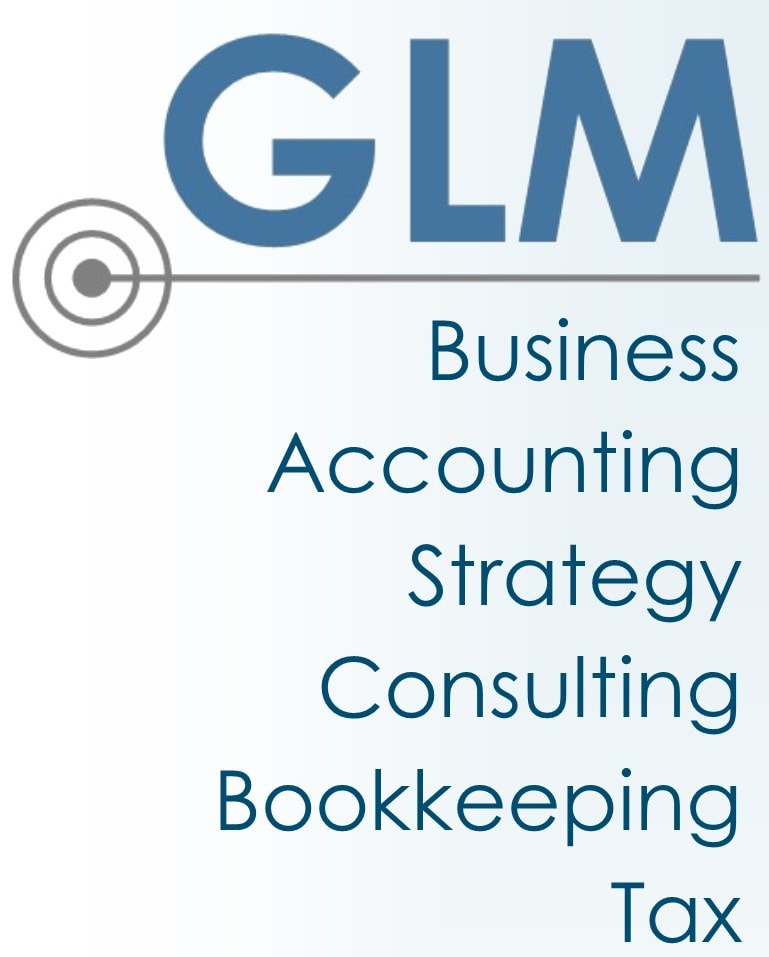Paycheck Protection Program (PPP) Loan Forgiveness
On May 13, 2020, the SBA & Treasury updated their Q & A with a $2 million safe harbor for the necessity of the loan.
Any borrower that, together with its affiliates, received PPP loans with an original principal amount of less than $2 million will be deemed to have made the required certification concerning the necessity of the loan request in good faith.
They have also extended the date to return the funds to 5/18/20 without penalty if borrowers feel they can’t meet the good faith test for the necessity of the loan.
Any borrower that, together with its affiliates, received PPP loans with an original principal amount of less than $2 million will be deemed to have made the required certification concerning the necessity of the loan request in good faith.
They have also extended the date to return the funds to 5/18/20 without penalty if borrowers feel they can’t meet the good faith test for the necessity of the loan.
This is what I have been able to glean so far from SBA and Department of the Treasury notices (along with CPA and Law firm interpretations).
The SBA will be relying on banks to gather and submit the required paperwork for PPP Loan forgiveness. Fully expect some banks to ask for more documentation than others. Some banks are asking for the PPP funds to go into a separate account. Keep very good records and be prepared to submit details.
Loan forgiveness will be based upon maintaining headcount, maintaining wages for each employee and payroll cost/other cost ratio.
Headcount reduction is determined by dividing the base FTE headcount during the 8 weeks of the PPP loan by the base FTE headcount during the look back period. The look back period is either from 1/1/20 to 2/29/20 OR 2/15/19 to
6/30/19 at the borrower's discretion. There is no definition yet of full-time equivalent (FTE) employees. Until that is issued, the best advice is to use 30 hours of part-timers = 1 FTE as that's been used before by the agencies involved.
Forgiveness is reduced for not maintaining wages per employee. The lookback period for wage level is 1st Q 2020. If any employee's salary is reduced by more than 25% during the 8 weeks of the PPP then the forgiveness is reduced dollar-for-dollar by the dollar amount of the portion beyond the 25% reduction. For employees earning more then $100,000, reductions are only considered if the employee ends up below $100,000 annualized in the more than 25% reduction. There has been no guidance given yet on how to calculate or compare these periods, for now, best advice is to use a weekly average for both periods.
And lastly at least 75% of the forgiveness must be payroll costs. Payroll costs include wages, commission, tips, paid leave, insurance premiums, retirement contributions, etc. Wages above $100,000 annualized to any single employee are excluded. The rest (up to 25%) must be for mortgage, rent or utilities. If more is spent in non-payroll categories the forgiveness will still cap based upon the 75% / 25% ratio.
There is no final guidance on the order of reduction, but everything I have read is presuming that the headcount reduction will be first and then the wage level reduction and then the 75% / 25% calculation will be last. In most cases this produces the biggest overall reduction in forgiveness so it's safest for projections.
An example:
A company had 10 FTE employees during the preferred look back period.
During the PPP period they had 6 FTE employees. They reduced 1 of the employee's wages by 30% (by reducing their hours average from 30 to 21 but keeping their rate at $11.00 an hour). During the PPP period they spent
$30,000 on payroll, $4,000 on rent and $2,000 on utilities. They are looking for $36,000 in forgiveness.
They have a 60% reduction due to headcount, therefor $21,600 is eligible for forgiveness.
The wage reduction beyond a 25% reduction is $132 for the 8 weeks, therefor
$21,468 is eligible for forgiveness.
Their payroll was 83% of the total, so the rent/utilities forgiveness is not reduced, therefor $21,468 is eligible for forgiveness.
The remaining $14,532 becomes a loan at 1% to be paid back over 2 years.
I don't think I quite made the 1 sheet reference target, and even still this misses a lot of the finer details.
There are a couple of ways that employers could not keep headcount or wage levels during the 8 weeks of PPP but restore them by 6/30/20 and still get forgiveness, but there are no details at all on how that works or how long after 6/30/20 they'd have to keep those levels restored so I've left that off.
The SBA will be relying on banks to gather and submit the required paperwork for PPP Loan forgiveness. Fully expect some banks to ask for more documentation than others. Some banks are asking for the PPP funds to go into a separate account. Keep very good records and be prepared to submit details.
Loan forgiveness will be based upon maintaining headcount, maintaining wages for each employee and payroll cost/other cost ratio.
Headcount reduction is determined by dividing the base FTE headcount during the 8 weeks of the PPP loan by the base FTE headcount during the look back period. The look back period is either from 1/1/20 to 2/29/20 OR 2/15/19 to
6/30/19 at the borrower's discretion. There is no definition yet of full-time equivalent (FTE) employees. Until that is issued, the best advice is to use 30 hours of part-timers = 1 FTE as that's been used before by the agencies involved.
Forgiveness is reduced for not maintaining wages per employee. The lookback period for wage level is 1st Q 2020. If any employee's salary is reduced by more than 25% during the 8 weeks of the PPP then the forgiveness is reduced dollar-for-dollar by the dollar amount of the portion beyond the 25% reduction. For employees earning more then $100,000, reductions are only considered if the employee ends up below $100,000 annualized in the more than 25% reduction. There has been no guidance given yet on how to calculate or compare these periods, for now, best advice is to use a weekly average for both periods.
And lastly at least 75% of the forgiveness must be payroll costs. Payroll costs include wages, commission, tips, paid leave, insurance premiums, retirement contributions, etc. Wages above $100,000 annualized to any single employee are excluded. The rest (up to 25%) must be for mortgage, rent or utilities. If more is spent in non-payroll categories the forgiveness will still cap based upon the 75% / 25% ratio.
There is no final guidance on the order of reduction, but everything I have read is presuming that the headcount reduction will be first and then the wage level reduction and then the 75% / 25% calculation will be last. In most cases this produces the biggest overall reduction in forgiveness so it's safest for projections.
An example:
A company had 10 FTE employees during the preferred look back period.
During the PPP period they had 6 FTE employees. They reduced 1 of the employee's wages by 30% (by reducing their hours average from 30 to 21 but keeping their rate at $11.00 an hour). During the PPP period they spent
$30,000 on payroll, $4,000 on rent and $2,000 on utilities. They are looking for $36,000 in forgiveness.
They have a 60% reduction due to headcount, therefor $21,600 is eligible for forgiveness.
The wage reduction beyond a 25% reduction is $132 for the 8 weeks, therefor
$21,468 is eligible for forgiveness.
Their payroll was 83% of the total, so the rent/utilities forgiveness is not reduced, therefor $21,468 is eligible for forgiveness.
The remaining $14,532 becomes a loan at 1% to be paid back over 2 years.
I don't think I quite made the 1 sheet reference target, and even still this misses a lot of the finer details.
There are a couple of ways that employers could not keep headcount or wage levels during the 8 weeks of PPP but restore them by 6/30/20 and still get forgiveness, but there are no details at all on how that works or how long after 6/30/20 they'd have to keep those levels restored so I've left that off.
This is from https://www.federalregister.gov/documents/2020/04/20/2020-08257/business-loan-program-temporary-changes-paycheck-protection-program-additional-eligibility-criteria which generally refers to a self-employed person who took a PPP loan, but it seems safe to infer that the same would hold for a company who took a PPP loan.
It makes things ever so slightly clearer:
iii. payments of interest on mortgage obligations on real or personal property incurred before February 15, 2020, to the extent they are deductible on Form 1040 Schedule C (business mortgage payments);
iv. rent payments on lease agreements in force before February 15, 2020, to the extent they are deductible on Form 1040 Schedule C (business rent payments); and
v. utility payments under service agreements dated before February 15, 2020 to the extent they are deductible on Form 1040 Schedule C (business utility payments).
So transportation that falls under business utility payments per 1040 Schedule C.
It makes things ever so slightly clearer:
iii. payments of interest on mortgage obligations on real or personal property incurred before February 15, 2020, to the extent they are deductible on Form 1040 Schedule C (business mortgage payments);
iv. rent payments on lease agreements in force before February 15, 2020, to the extent they are deductible on Form 1040 Schedule C (business rent payments); and
v. utility payments under service agreements dated before February 15, 2020 to the extent they are deductible on Form 1040 Schedule C (business utility payments).
So transportation that falls under business utility payments per 1040 Schedule C.
| coronavirus-ppp-loan-forgiveness-calculation-steps.pdf | |
| File Size: | 188 kb |
| File Type: | |
Thanks for signing up!



